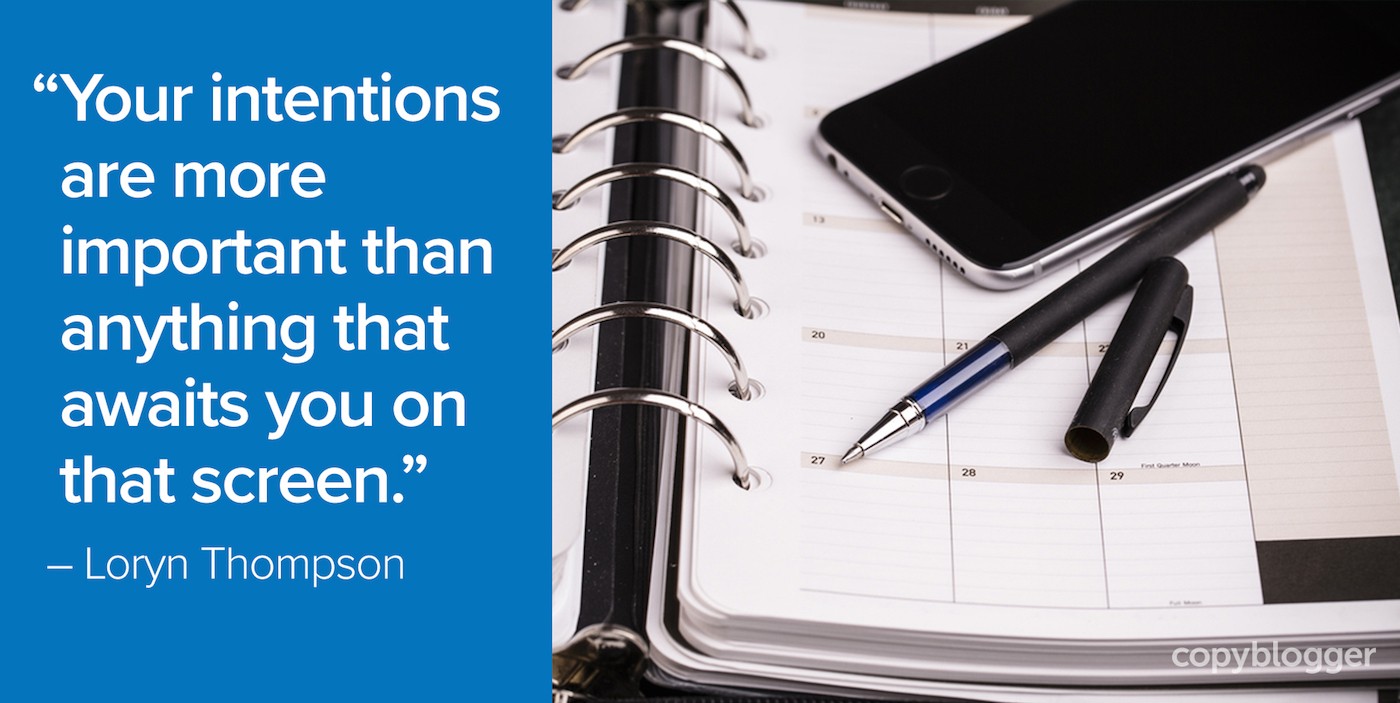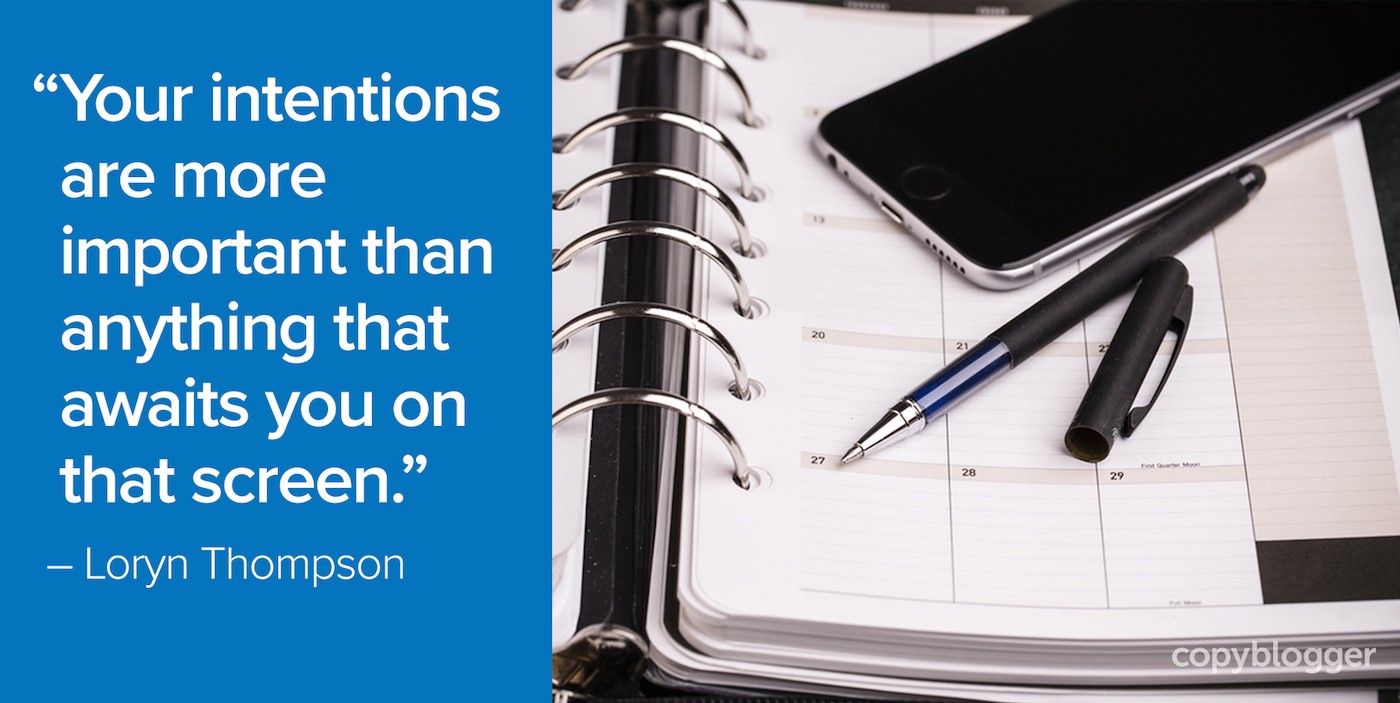Before we get started, though, remember that learning to balance productivity and technology isn’t easy. For example, muscle memory lead me to check Facebook and Instagram more often than I wanted to: I would open up my phone and navigate to the apps automatically. Now that I’m aware of my muscle memory loop as well, I have the opportunity to reflect and ask myself: “Is this really what I want to do right now?” Remember to breathe Did you know that most people hold their breath when they check their email? To fend off the stress, I began a very simple habit: Before checking my phone each morning, I take 10 deep breaths. Journaling and walking both feel so easy, but before I realized the importance of goals and intentions, I had a hard time sticking with them. Sometimes things take more time to accomplish than I thought, and sometimes they take almost no time at all. Breaking down a task requires you to think through it, and thinking through a task primes your brain to work on it. In that case … I spend an hour working on that big project and set a timer The point of the timer isn’t to track your time; it’s to create space for your brain to focus. Which habits will work for you? As long as you remember that goals and intentions come first — before email, texts, or Twitter — you’ll be surprised by how much you can change.

Last month, I wrote about how a goal-oriented approach to using technology can help you become more focused and productive.
Using that guidance, I’ve now broken negative habits and built new ones that support my goals.
Want to know how I changed my relationship with screens in ways I used to only dream about?
Before we get started, though, remember that learning to balance productivity and technology isn’t easy. It’s like learning a language — you can read about how someone else learned French, but you won’t be able to speak it until you learn for yourself.
So, keep in mind that I’m not sharing my habits so you can adopt them verbatim. Instead, I hope they’ll give you some ideas about changes you might like to make in your own life.
Break the negative media cycle
One of my worst technology habits is the “media loop.”
Here’s how it goes:
I pick up my phone in the evening to check Instagram. Then I jump over to Facebook … and after I get bored there, I hop over to Reddit. Before I realize it, I’ve lost an hour and I’m back on Instagram again.
The problem isn’t the circular behavior itself. The problem is how it makes me feel.
Some evenings, loading up on cute animal GIFs is exactly what I want to do. But other days, it feels more like a trap.
The more I scroll, the worse I feel. The worse I feel, the more I scroll.
I used to have a hard time telling the difference between those two outcomes. But I’ve realized that when I’m scrolling on my phone, my intention is to relax and de-stress.
So, when I’m glued to my phone, I ask myself: “Am I fulfilling my intention of relaxing?”
If the answer is “Yes, this is great,” then I watch cat videos to my heart’s content. But if the answer is “No, this sucks,” simply having asked the question makes it easier to set my phone down and walk away.
Combat your muscle memory
Since recognizing my standard “media loop,” I’ve identified several different ways my automatic responses promote distractions.
For example, muscle memory lead me to check Facebook and Instagram more often than I wanted to: I would open up my phone and navigate to the apps automatically.
To fight this habit, I moved all my essential apps to my home screen and buried my more troublesome apps in a network of folders, making them harder to find.
Even with this new setup, though, sometimes muscle memory creeps back in. So, whenever I feel that my muscle memory is getting too strong, I scramble my apps.
Now that I’m aware of my muscle memory loop as well, I have the opportunity to reflect and ask myself: “Is this really what I want to do right now?”
Remember to breathe
Did you know that most people hold their breath when they check their email?
Writer Linda Stone first documented this in 2008 during her informal study, where she found that 80 percent of her subjects held their breath while waiting for their email to load.
Go ahead, check your email….

COMMENTS